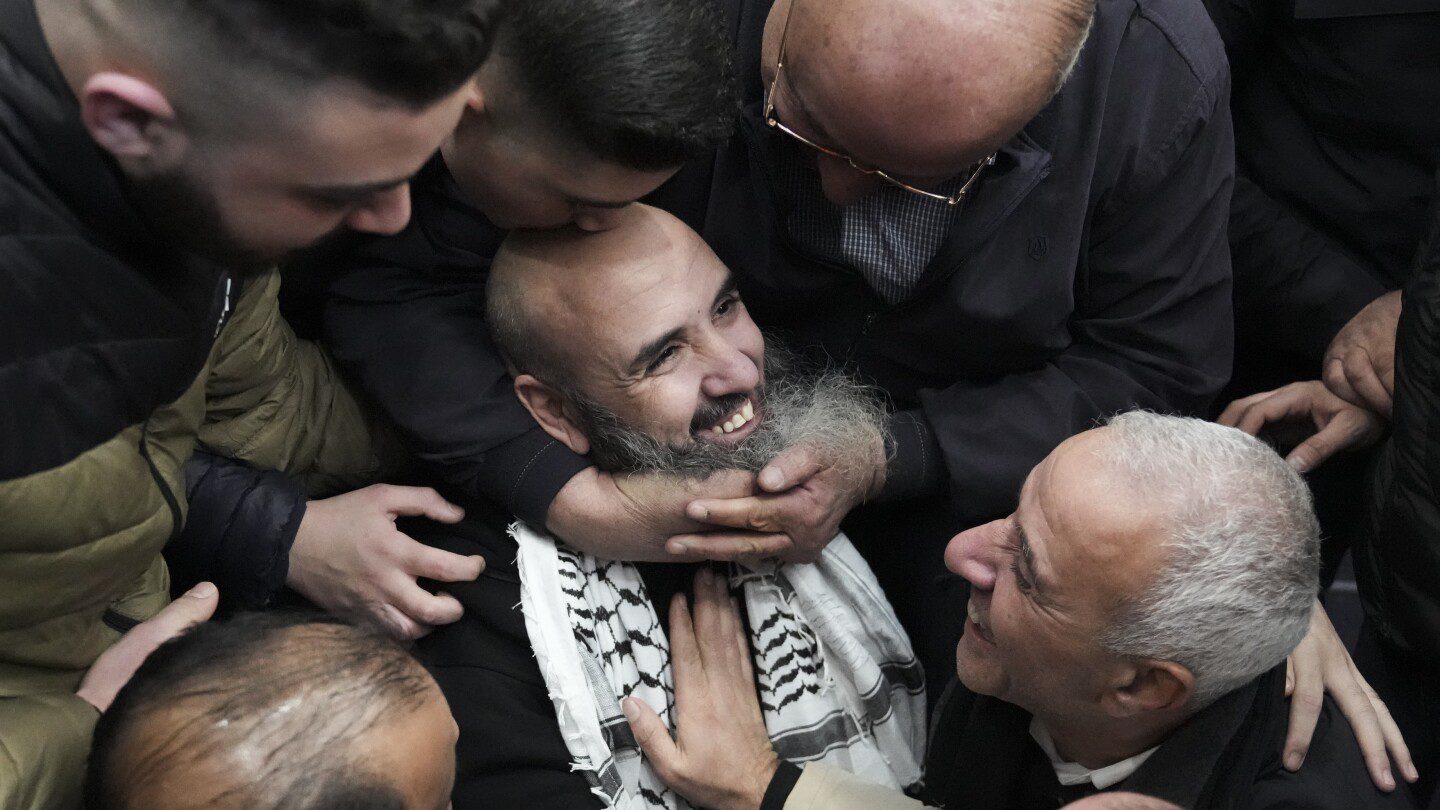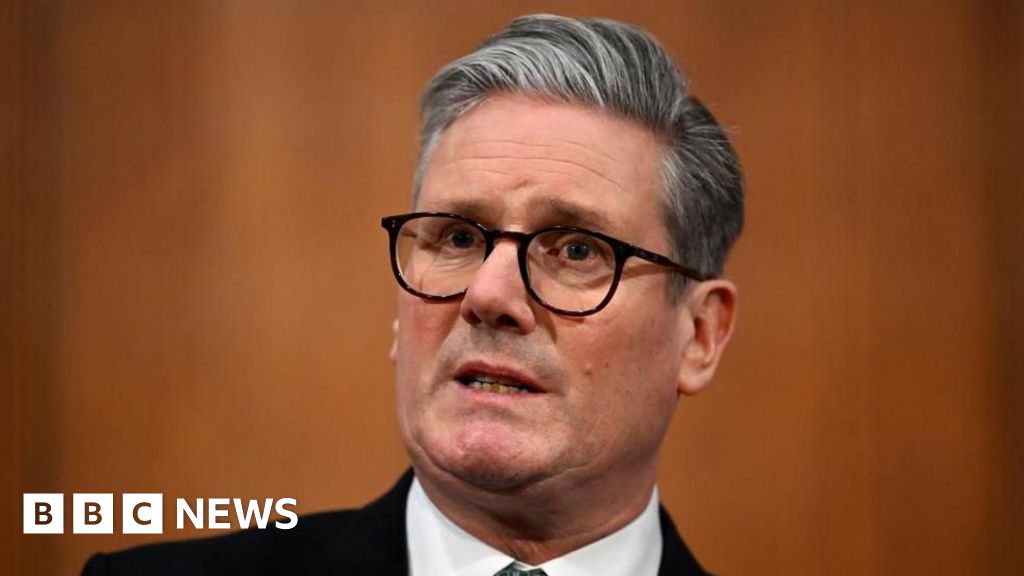
JERUSALEM (AP) — On Saturday, Israel freed 369 Palestinian detainees in a recent prisoner swap linked to Israeli hostages held by Hamas, coinciding with a delicate ceasefire agreement.
While Israel categorizes these detainees as terrorists, Palestinians often regard them as freedom fighters combating a prolonged Israeli military occupation.
Most Palestinians have friends or family members who have faced imprisonment by Israel, whether for serious militant activities or minor offenses like rock-throwing. Many individuals are held for extended periods without trial under a system called administrative detention, which Israel justifies as necessary to avert potential attacks and protect sensitive intelligence.
Among the newly released individuals, 36 had been sentenced to life imprisonment for their roles in fatal assaults on Israelis. A dozen of them were permitted to return to homes located in the occupied West Bank and East Jerusalem.
According to Palestinian medical sources, four individuals required hospitalization for urgent care, while the remaining 24 serving life sentences were sent into exile.
The other 333 Palestinians released had been detained in Gaza following Hamas’ attack on October 7, 2023, which escalated the ongoing conflict. Israeli forces have apprehended hundreds in Gaza, holding many without trial. As part of the ceasefire agreement, Israel pledged to release over 1,000 detainees, provided they were not involved in the October 7 assault.
Here’s a closer look at some notable prisoners freed since the truce commenced on January 19:
Ahmed Barghouti, 48
One of the most significant figures released is Ahmed Barghouti, a close ally of Marwan Barghouti, a prominent political and militant leader who remains incarcerated. Ahmed received a life sentence for orchestrating attacks that resulted in Israeli civilian casualties during the second intifada in the early 2000s. As a leader in the Al-Aqsa Martyrs’ Brigades, a militant faction of the secular Fatah Party, he was also convicted for attempted murder and weapon possession. He has now been sent to Egypt.
The Sarahneh Brothers
Three brothers from East Jerusalem were released after serving over 22 years in prison under charges related to suicide bombings during the second intifada that claimed Israeli lives. Ibrahim, 55, and Musa, 63, were returned to their homes in the West Bank, while Khalil, 45, who was sentenced for attempted murder, was also sent to Egypt. Ibrahim’s wife, Irena, a Ukrainian national, was previously sentenced to life in prison for her involvement in a suicide bombing but was released in 2011 as part of a different exchange.
“The conditions in prison are more unbearable than one could imagine; there is violence, insults, and constant mistreatment,” Ibrahim Sarahneh stated to The Associated Press upon arrival in the West Bank village of Beitunia. The Israeli Prison Service asserts that it upholds all prisoners’ basic rights and detains them legally.
The Aweis Brothers
Hassan Aweis, 47, and Abdel Karim Aweis, 54, from the occupied West Bank, were also released on Saturday after nearly 23 years behind bars. Hassan faced life imprisonment in 2002 for charges including voluntary manslaughter and planning attacks as part of the Al-Aqsa Martyrs’ Brigade during the second intifada. “It’s a feeling filled with indescribable pain and joy,” Hassan expressed after his release. Abdel Karim, who was given the equivalent of six life sentences for multiple offenses, was transferred to Egypt.
Iyad Abu Shakhdam, 49
Iyad Abu Shakhdam received sentences equivalent to 18 life terms for his involvement in Hamas attacks that led to numerous Israeli fatalities during the second intifada, including a 2004 suicide bombing in Beersheba that killed 16. Arrested in the West Bank in 2004 after a violent confrontation with Israeli forces, he spent 21 years in prison, during which he completed his high school education and pursued psychology courses. He was released on February 8.
Jamal al-Tawil, 61
A prominent Hamas leader in the occupied West Bank, Jamal al-Tawil spent nearly 20 years in Israeli prisons for alleged involvement in plotting suicide bombings. Arrested in 2021, he faced multiple charges before his release on February 8; however, he was too weak to walk and required hospitalization shortly after.
Mohammed el-Halabi, 47
Mohammed el-Halabi, who managed World Vision’s Gaza branch, was detained in 2016 under accusations of embezzling funds for Hamas, a claim met with criticism from human rights advocates. He was released on February 1, with both he and his organization denying the allegations, leading to independent investigations that found no evidence of misconduct.
Zakaria Zubeidi, 49
Once a notable leader in the Al-Aqsa Martyrs’ Brigade, Zakaria Zubeidi later transitioned to a theater director at the Jenin refugee camp, focusing on cultural initiatives aimed at resisting Israeli occupation. His dramatic escape from one of Israel’s most secure prisons in 2021 captured the attention of Palestinians and confounded Israeli security forces. After being re-arrested, he was awaiting trial and served a five-year sentence for his escape before being released to the West Bank on January 30.
Mohammed Odeh, 52, Wael Qassim, 54, and Wissam Abbasi, 48
The trio from East Jerusalem was implicated in fatal attacks during the second intifada and faced multiple life sentences in 2002. They were found guilty of orchestrating a suicide bombing that took 15 lives at a pool hall near Tel Aviv and a separate bombing at Hebrew University that claimed nine lives, including five American students. They were transferred to Egypt on January 25.
Mohammad al-Tous, 67
Mohammad al-Tous was the longest-serving prisoner in Israeli custody until his release on January 25. Arrested in 1985 for his activities against Israeli forces, he spent a total of 39 years imprisoned. Originally from the West Bank, he has now been exiled.
___
Stay updated with AP’s comprehensive coverage of the ongoing conflict by visiting AP News on Israel-Hamas war.









